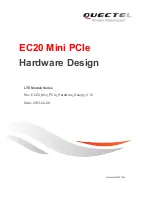
ONLINE HELP SOPAS
Chapter
5
LECTOR®620
Parameters
8013778/Y269/2013-11-27
©
SICK AG · Germany · All rights reserved · Subject to change without notice
79
5.8.4.1.1
Check min. number of valid codes
If the
Check min. number of valid codes
parameter is activated, the number of different co-
des is determined and compared with a specified minimum value (
This enables you to check, for example, whether all required codes for an object are avai-
lable.
Minimum
The
parameter is used to define the minimum number of different codes that
must be identified so that a reading is classed as a G
OOD
R
EAD
. If the specified value is not
reached, the reading is classed as invalid (N
O
R
EAD
).
All codes that differ from the other codes in terms of the symbology, code length, code con-
tents, or code positions are counted.
5.8.4.1.2
Check max. number of valid codes
Check max. number of valid codes
parameter is activated, the number of different co-
des is determined and compared with a specified maximum value (
).
This enables you to ensure, for example, that only the required codes for an object are avai-
lable.
Maximum
parameter is used to define the maximum number of different codes that can
be identified so that a reading is classed as a G
OOD
R
EAD
. If the specified value is exceeded,
the reading is classed as invalid (N
O
R
EAD
).
All codes that differ from the other codes in terms of the symbology, code length, code con-
tents, or code positions are counted.
5.8.4.2
Evaluation conditions
Conditions that are checked by the device at each reading gate are defined in the
group. If defined conditions are fulfilled, specific actions can be per-
formed by the device – for example, setting an output signal, ending a reading gate, or out-
putting an image or a particular data string.
Evaluation conditions can be used to define situations that serve as reference points for fle-
xible process control and data processing in the device software. The use of evaluation con-
ditions shifts the complexity of control tasks from the external controls (PLCs) into the code
reader, meaning costs are reduced.
General operation
Conditions that have already been created can be edited via the button. A dialog box
opens which specifies the condition in detail.
Conditions that have been taught in can be deleted via the button.
A further new condition can be created via the button. A dialog box opens which allows
you to accurately specify the condition. The condition type and name are accurately defined
in the dialog box along with the condition itself.
















































